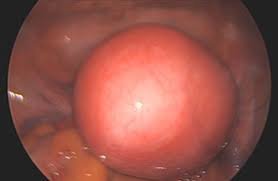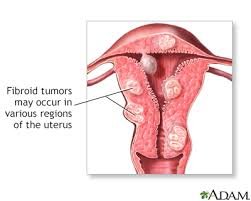In Nigeria, uterine fibroids remain a silent but overwhelming health burden, particularly for women of reproductive age. Characterized by non-cancerous tumors in the uterus, fibroids are a leading cause of gynecological surgeries and hospital admissions nationwide. Despite their prevalence and impact on fertility, quality of life, and mental health, the condition remains cloaked in misinformation, stigma, and limited access to affordable healthcare. Juliet Jacob presents the stories of women who battled the dreaded uterine fibroids in recent time.
Interview: Battling Fibroids in Silence — Ruth’s Story
In the bustling city of Abuja, Mrs. Simon Ruth shared her harrowing journey with fibroids in an exclusive interview with Africa Health Report (AHR). She lived unknowingly with the condition for years before its discovery during her struggle to conceive.
“I was having fibroids without even knowing for several years,” she revealed. After three years of trying to get pregnant and faithfully taking folic acid, Ruth finally conceived. But her journey to motherhood was marred by sharp abdominal pains that persisted throughout her pregnancy. She ultimately delivered via cesarean section, during which doctors surgically removed multiple fibroids.

Her experience echoes that of millions of Nigerian women—battling an invisible adversary with little or no support until it threatens fertility or life.
Alarming Statistics and Rising Global Concern
According to the World Health Organization (WHO), there were approximately 9.64 million new fibroid cases and 226.05 million existing cases globally in 2019. The burden is disproportionately higher in low- and lower-middle-income regions, with Nigeria recording one of the highest incidence rates worldwide. Teaching hospitals across the country confirm that the majority of fibroid-related cases involve women aged 30 to 39, with some patients undergoing multiple surgeries over their lifetime.
Understanding the Condition
Fibroids, medically referred to as uterine leiomyoma, are noncancerous growths composed of smooth muscle cells and fibrous tissue. Dr. Kemi Ailoje, a Reproductive Endocrinologist and Fertility/IVF Specialist, explains that while the exact cause remains unknown, factors such as hormonal imbalance, genetics, obesity, and ethnicity play significant roles.
“Fibroids may complicate pregnancy, but they don’t necessarily prevent a successful one,” Dr. Kemi told AHR. “The risks depend on their size, location, and symptoms.”
She noted that intervention during pregnancy is only required when fibroids cause severe pain due to red degeneration, grow rapidly, or obstruct labour. Otherwise, many cases can be managed conservatively with close monitoring.

The Human Toll: Voices from the Ground
Fibroids often take a significant emotional and physical toll on women. Some resort to dangerous, unregulated alternatives due to lack of access or fear of surgery.
Here’s a professionally rewritten version of both testimonies with clarity, emotion, and journalistic tone preserved:
Miss Justina, Abuja:
“The truth is, I’m terrified of surgery—just the thought of a knife makes me panic. That’s why a friend introduced me to a local doctor in the northern part of Nigeria. Every two months, I take time off work and travel there to have my fibroids removed. The process is simple but unconventional: the doctor gives me a herbal concoction to take at night, and by the next morning, I push the fibroid out as if I’m in labour.
This method has worked for me so far. I can’t afford regular hospital procedures; they’re too expensive. And honestly, I don’t have the mental strength for surgery. I just want these fibroids gone before I get married so they don’t become an issue later. Living with fibroids is extremely painful—my menstrual cycle is a nightmare, and I’m always uncomfortable.”
Mrs. Peace, a middle-aged woman, shared her emotional journey with Africa Health Report:
“Fibroids ruined my marriage. My husband and I were together for three years without having a child, and eventually, he started blaming the fibroids. He stood by me during my first surgery, but things changed afterward. Our relationship began to deteriorate, and not long after, he travelled abroad. I haven’t heard from him since.

I went through a second surgery on my own. Now, the doctors say I need a third one. Honestly, I’m exhausted—physically and emotionally. I just can’t face another operation. That’s why I’ve turned to herbal medicine a friend recommended. I’ve been using it in hopes of shrinking the fibroids, because I can’t bear the thought of going under the knife again.”
Inequality in Diagnosis and Treatment
Access to diagnosis and treatment is heavily skewed toward urban, wealthier women. In rural and underserved areas, fibroids are often misdiagnosed or left untreated due to:
High cost of surgeries and medications
Lack of gynecological specialists
Inadequate diagnostic facilities
Cultural and spiritual interpretations of the condition
Even though advanced procedures such as uterine artery embolization and laparoscopic surgery are available, they remain unaffordable or inaccessible to most Nigerian women, especially those reliant on public healthcare.
Risk Factors and Cultural Barriers
Several key factors influence fibroid development and severity among Nigerian women:
Age: Risk increases after age 30, peaking in the late 30s and early 40s
Nulliparity: Women who haven’t given birth face higher risk
Genetics: A family history of fibroids increases susceptibility
Diet: High consumption of red meat and low intake of fruits and vegetables
Hormonal Imbalance: Elevated estrogen levels promote fibroid growth
Obesity and Sedentary Lifestyles
Beyond biology, cultural stigma and spiritual beliefs often delay medical intervention. Many women interpret symptoms as divine punishment or ancestral curses, further complicating early diagnosis and treatment.
Treatment Options: Between Hope and Hard Choices
Dr. Kemi outlines treatment strategies based on symptom severity and reproductive goals:
Observation: For small, asymptomatic fibroids
Hormonal Therapy: To reduce size and control bleeding
Myomectomy: Surgical removal for women desiring fertility
Hysterectomy: In extreme cases where childbearing is no longer a goal
Uterine Artery Embolization: Non-invasive but rarely available
However, as both Ruth’s and Peace’s stories highlight, many women are forced to choose between painful, repeat surgeries or uncertain traditional alternatives.
A Call for Change: Awareness and Policy Reform
Experts agree that addressing the fibroid epidemic requires urgent action. Dr. Uche Menakaya, an Australian-trained Nigerian gynecologist, emphasized at a recent training in Warri:
“Fibroids are not a spiritual problem or a death sentence. If you know where they are and monitor them, you can manage them effectively before they become a threat.”
Recommendations include:
Nationwide awareness campaigns to educate women and debunk myths
Integration of fibroid treatment into the National Health Insurance Scheme (NHIS)
Investment in rural healthcare infrastructure and diagnostic equipment
Targeted research funding into local risk factors and treatment gaps
Conclusion: Reclaiming Reproductive Health
Uterine fibroids are more than a medical issue—they are a reproductive justice crisis in Nigeria. With millions of women suffering in silence and lacking access to safe, affordable care, the country stands at a critical crossroads. Early intervention, comprehensive care, and destigmatization are vital steps toward restoring dignity and health for Nigerian women.
As Mrs. Ruth Simon reflects on her victorious journey through pain, pregnancy, and surgery, she remains a symbol of hope, resilience, and the power of awareness in confronting fibroids. “If I had known earlier,” she says, “maybe I could have avoided all that pain.”



